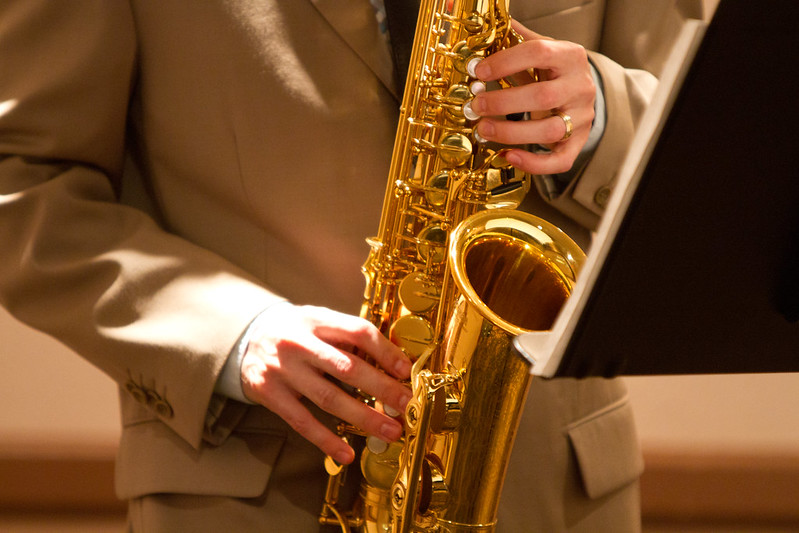
The saxophone is a remarkable musical instrument that has captured the hearts of musicians and music enthusiasts alike. With its distinctive sound and versatile range, the saxophone adds a touch of elegance and soul to various genres of music. In this article, we will dive into the fascinating world of the saxophone and uncover some fun facts that will enhance your appreciation for this beloved instrument.
Saxophones: A Musical Marvel
The saxophone, invented by Adolphe Sax in the 1840s, is a member of the woodwind family. It features a conical brass body with a single reed mouthpiece, combining elements of both brass and woodwind instruments. The saxophone is known for its expressive tone and ability to produce a wide range of musical expressions.
Saxophone Inventor: Adolphe Sax
Adolphe Sax, the Belgian instrument maker who invented the saxophone, played a significant role in shaping the world of music. Sax came from a family of instrument makers, which influenced his passion for innovation. His father and grandfather were respected instrument builders, and Sax continued the tradition by revolutionizing the world of wind instruments.
In 1846, Adolphe Sax received a patent for the saxophone, officially establishing his invention’s design and concept. The patent protected his creation and paved the way for its widespread use in the years to come.
Soprano Saxophone
The soprano saxophone is the smallest member of the saxophone family, known for its bright and vibrant sound. It is often featured in classical, jazz, and contemporary music.
Alto Saxophone
The alto saxophone is the most commonly played saxophone and is known for its smooth and versatile tone. It is widely used in jazz, pop, and classical music genres.
Tenor Saxophone
The tenor saxophone has a deeper and richer tone compared to the alto saxophone. It is a popular choice in jazz, blues, and rock music, and its expressive capabilities make it a favorite among many musicians.
Baritone Saxophone
The baritone saxophone is the largest and lowest-pitched saxophone in the family. Its deep and resonant sound adds a powerful foundation to jazz ensembles and other musical settings.
Electric Saxophone
In recent years, advancements in technology have led to the development of electric saxophones. Electric saxophones utilize electronic amplification and sound processing to create unique sounds and effects, expanding the sonic possibilities of the instrument.
Charlie Parker
Charlie Parker, also known as “Bird,” was a groundbreaking jazz saxophonist and composer. His innovative improvisation and virtuosity revolutionized jazz, making him one of the most influential figures in the genre.
John Coltrane
John Coltrane, an iconic figure in jazz history, was a highly influential tenor saxophonist. His unique style and experimental approach pushed the boundaries of the saxophone’s capabilities and left an indelible mark on jazz music.
Stan Getz
Stan Getz was a renowned jazz saxophonist known for his smooth and lyrical playing style. His melodic improvisations and collaborations with prominent artists contributed to the popularization of the saxophone in mainstream music.
Lisa Simpson
Lisa Simpson, a character from the animated TV series “The Simpsons,” is a fictional saxophonist. Her love for the saxophone and dedication to her craft has inspired many young aspiring musicians.

Jazz Origins
The saxophone’s rise to popularity is closely associated with the emergence of jazz music in the late 19th and early 20th centuries. The saxophone’s expressive capabilities and versatility made it a perfect fit for jazz improvisation and helped define the genre’s sound.
Saxophone Sound Projection
The saxophone is renowned for its exceptional sound projection and ability to cut through ensembles. This quality is attributed to its conical shape, which allows the sound waves to travel with minimal resistance.
Sought-After Soundtracks
The saxophone’s captivating sound has made it a popular choice for film composers. Many iconic movie soundtracks feature memorable saxophone solos, evoking a range of emotions and enhancing the cinematic experience.
Saxophone in Pop Music
The saxophone has had notable appearances in pop music, adding a touch of elegance, soulfulness, or funkiness to various songs. Iconic saxophone solos can be heard in songs like Gerry Rafferty’s “Baker Street,” Bruce Springsteen’s “Born to Run,” and George Michael’s “Careless Whisper.
Saxophone in Classical Music
Although primarily associated with jazz and popular music, the saxophone has also made its mark in the classical music realm. Composers such as Maurice Ravel, Alexander Glazunov, and Claude Debussy have incorporated the saxophone into their orchestral compositions.
Jazz Funerals
In New Orleans, jazz funerals are a traditional way to celebrate the life of a deceased individual. Saxophonists often lead the procession, playing mournful melodies that gradually transition into lively jazz tunes, symbolizing the journey from mourning to celebration.
Saxophone Olympics
The World Saxophone Congress, also known as the “Saxophone Olympics,” is a gathering of saxophonists from around the globe. It provides a platform for musicians to showcase their skills, share knowledge, and celebrate the saxophone’s rich heritage.

Conclusion
The saxophone’s mesmerizing sound and expressive capabilities have cemented its place as a beloved instrument in the world of music. From Adolphe Sax’s inventive spirit to the influential saxophonists who have shaped the genre, the saxophone continues to captivate audiences with its soulful melodies. As you delve into the world of saxophone music, remember these fun facts and let them deepen your appreciation for the magic and artistry of this remarkable instrument.
Frequently Asked Questions (FAQs)
Is the saxophone a difficult instrument to learn?
The saxophone requires dedication and practice to master, like any musical instrument. However, with proper instruction and consistent practice, beginners can learn to play basic melodies relatively quickly.
Can the saxophone be played in different musical genres?
Absolutely! The saxophone’s versatility allows it to be played in various genres, including jazz, classical, pop, rock, and more. Its expressive capabilities make it a favorite among musicians in different musical styles.
How many keys does a saxophone have?
The standard saxophone has 23 keys, although some variations may have additional keys or alternate fingerings to accommodate different playing techniques or musical requirements.
Can the saxophone be played in a marching band?
Yes, the saxophone is commonly played in marching bands. Its powerful sound and projection make it an excellent choice for outdoor performances and parades.
Are saxophones expensive?
The price of a saxophone can vary depending on factors such as the brand, quality, and level of craftsmanship. Entry-level student saxophones are generally more affordable, while professional-grade saxophones can be quite expensive.
Was this page helpful?
Our commitment to delivering trustworthy and engaging content is at the heart of what we do. Each fact on our site is contributed by real users like you, bringing a wealth of diverse insights and information. To ensure the highest standards of accuracy and reliability, our dedicated editors meticulously review each submission. This process guarantees that the facts we share are not only fascinating but also credible. Trust in our commitment to quality and authenticity as you explore and learn with us.
